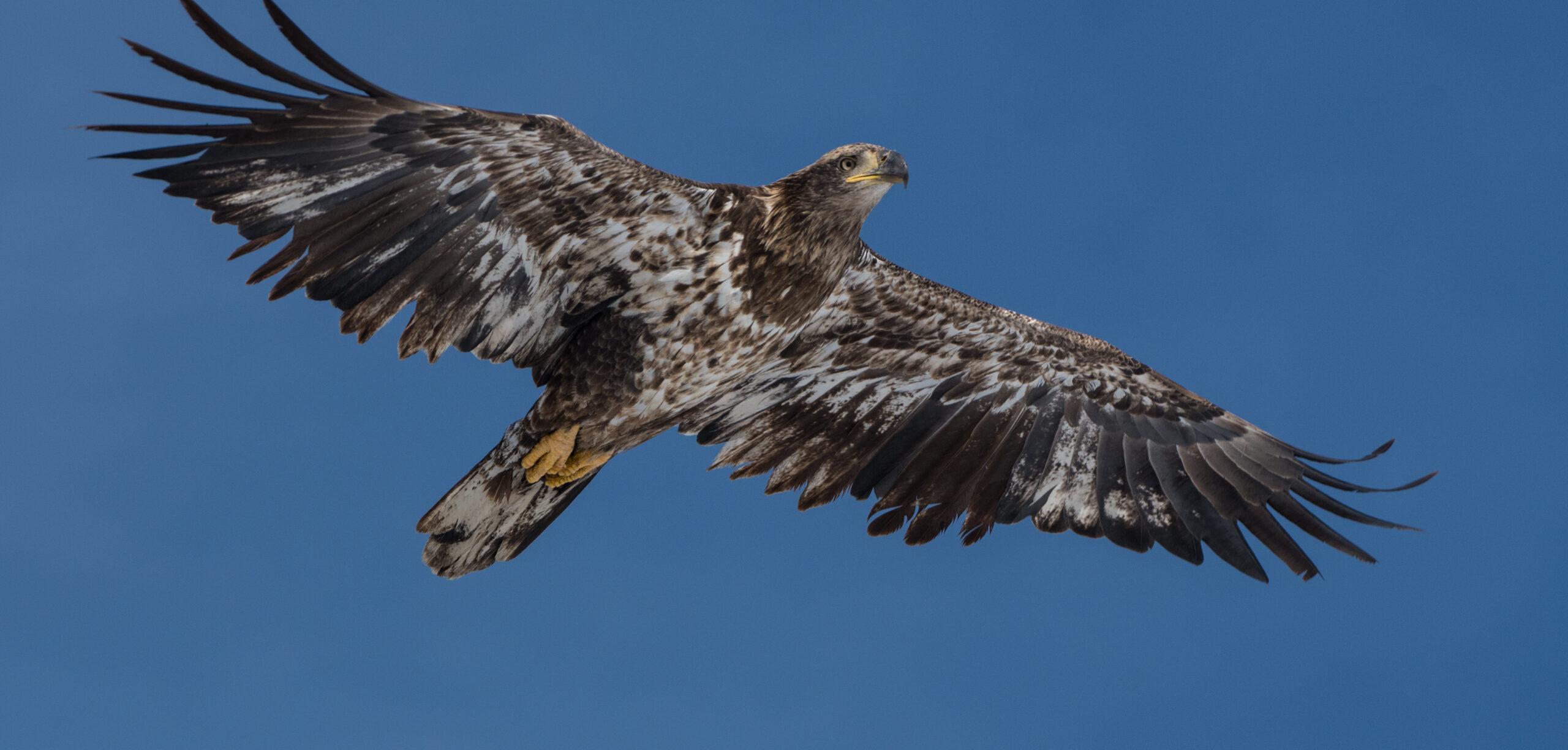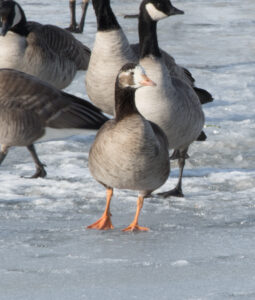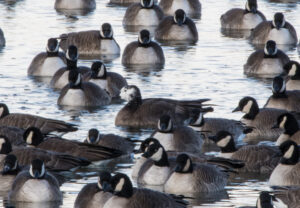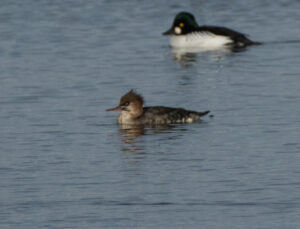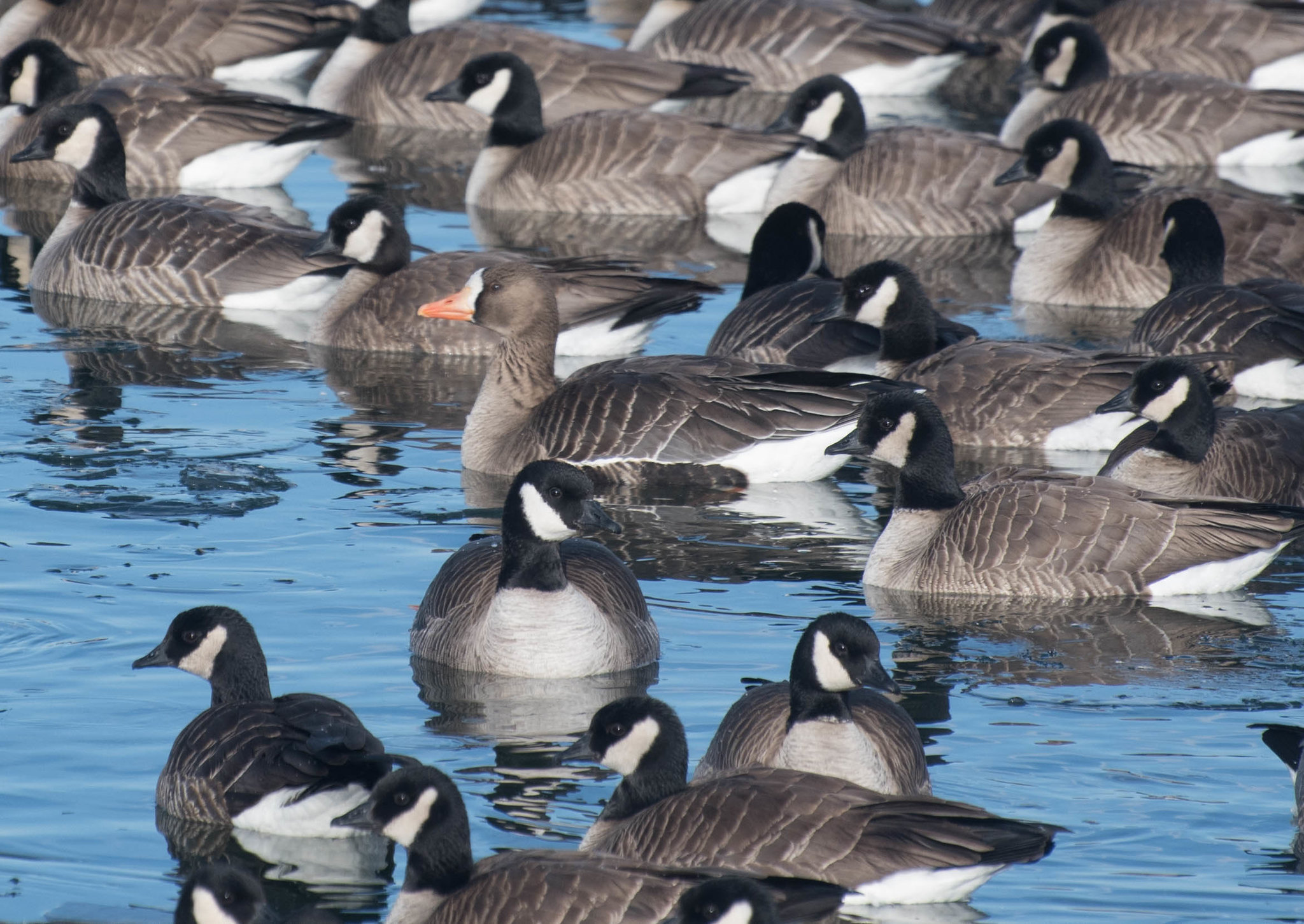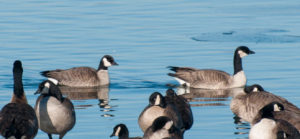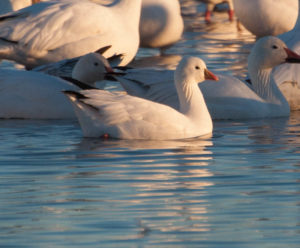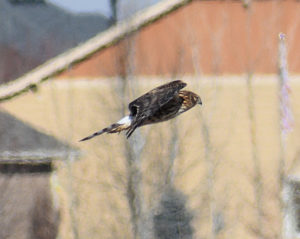
Well, it was certainly a cold, snowy morning for a bird walk, but after having to cancel due to dangerous cold last month, I was reluctant to cancel a second month in a row. Happily, the weather meant we had the trail to ourselves and the ducks! One of the best things about Milavec Reservoir is how small it is and how the trail goes all the way around so it’s very easy to get good looks at everything on the water.
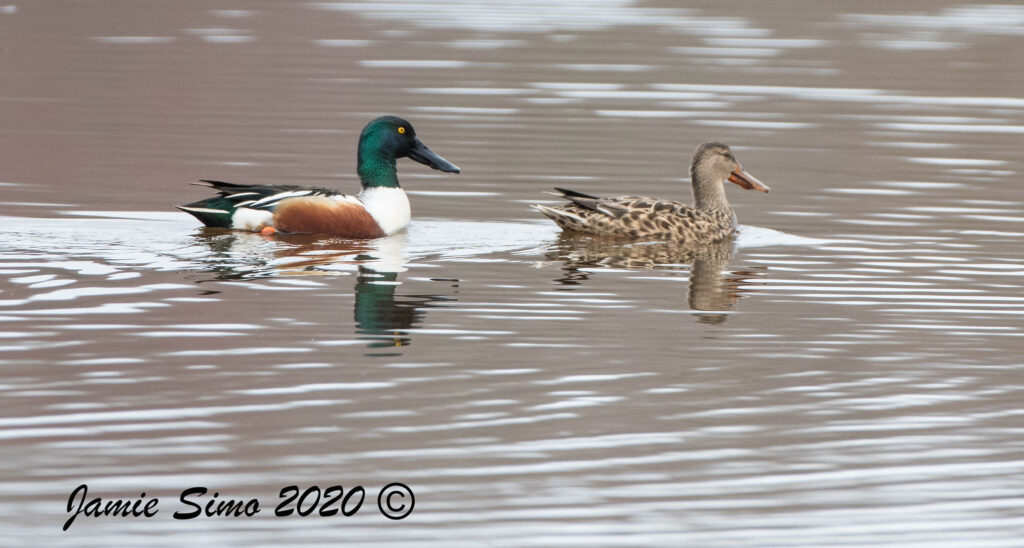
Strangely, there weren’t any geese on the water on Saturday, though we more than made up for it by the number of ducks, especially Northern Shovelers, which were by far the most numerous species. The sound of their wings was impressive when a young Bald Eagle flew over, flushing them briefly. Intermingled were a good number of Canvasbacks, which are named for the male’s bright white body that resembles the color of a blank canvas. They are the largest of our diving ducks and have a distinctive, “ski slope” forehead. Other ducks present were Common Goldeneye, Mallards, and even a pair of Green-winged Teal.
One of the other most numerous species was the Common Merganser. Mergansers’ bills are narrower and sharper than most other ducks with serrations that make it easy for them to grab and eat fish and mollusks. In fact, those serrations earn them the nickname “sawbill” in some circles.
While there weren’t many songbirds that braved the weather, we did see and hear several Horned Larks fly over. Horned Larks have distinctive “horns” (really feathers) on their heads called plumicorns, and dark facial masks. Their presence was likely due to the fallow agriculture field next to the reservoir as they love bare ground and short grasses. Believe it or not, Horned Larks are the only true lark found in North America; Meadowlarks are actually members of the blackbird family.
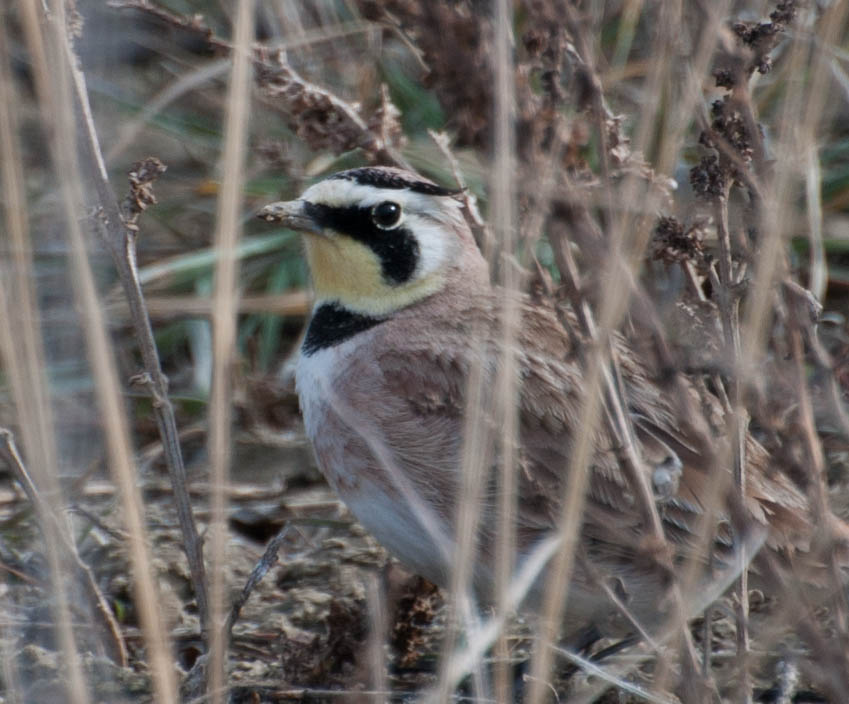
A short but sweet walk, we netted 16 species in all, which wasn’t too shabby all things considered. Here’s to a warmer, sunnier March bird walk!
Frederick Lake (Milavec Reservoir) & Recreation Area, Weld, Colorado, US
16 species (+1 other taxa)
Canada Goose 1
Cackling/Canada Goose 7
Northern Shoveler 400
Mallard 27
Green-winged Teal 2
Canvasback 10
Common Goldeneye 10
Common Merganser 20
Ring-billed Gull 2
Bald Eagle 1
Northern Flicker 2
Black-billed Magpie 1
American Crow 1
Horned Lark 4
American Robin 3
American Goldfinch 1
Song Sparrow 2


